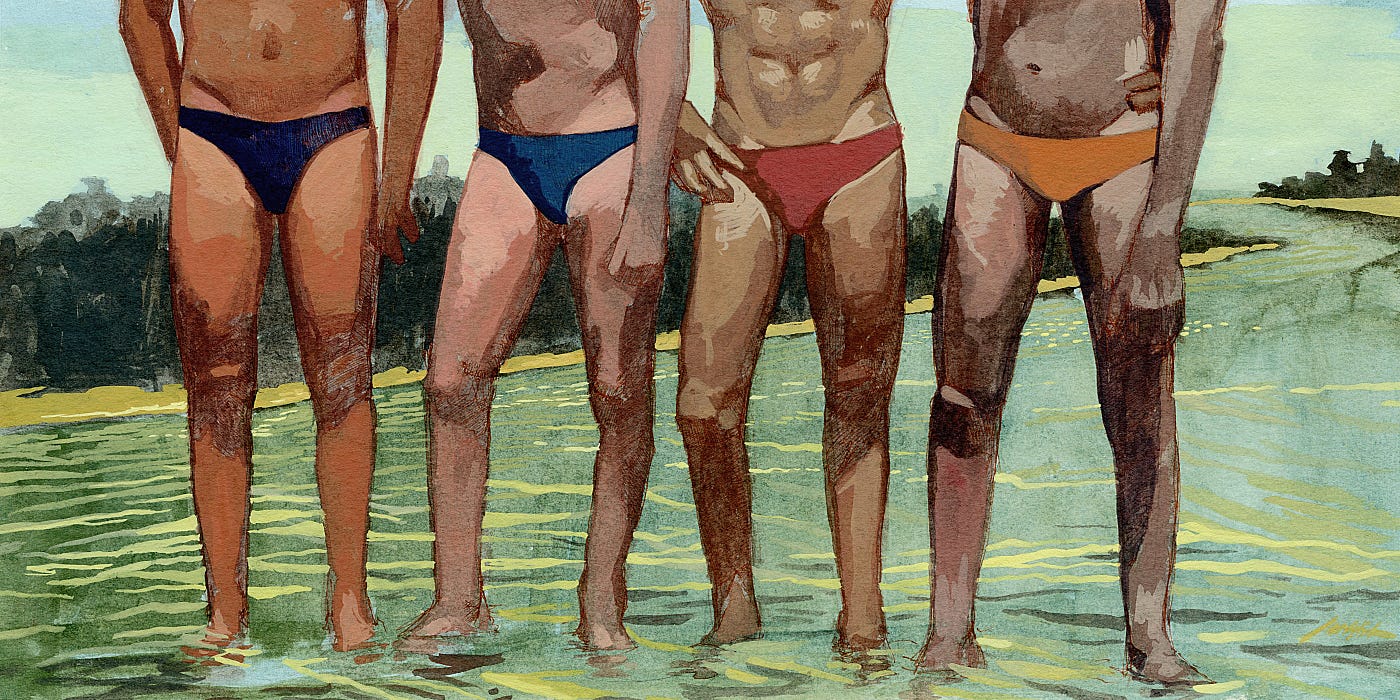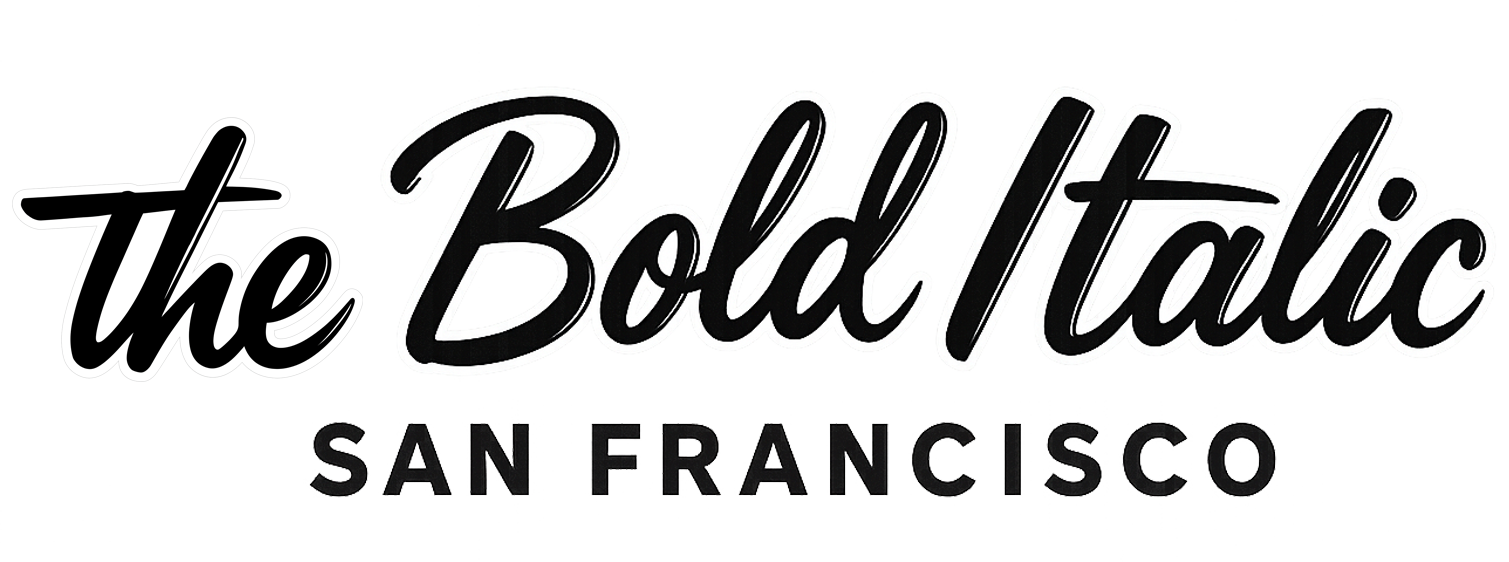By Catherine Cole

You don’t have to live in San Francisco for very long before you learn about Guerneville’s glory as an LGBT destination. Soon after I moved here in 2010, everyone I met gushed with fondness over the Russian River town. “So let me get this straight (ha!),” I’d ask. “This tiny ex-logger town is really…gay?” They’d nod with appreciation. But why Guerneville, I wondered? What made this place — and not Point Reyes, Healdsburg or Bolinas — the favorite queer getaway with its resorts, bars, a Pride Parade, a girls’ weekend, Bear weekend, and a chapter of the Sisters of Perpetual Indulgence?
As is often the case with subculture history, the precise answer to that question is up for debate. But gay Guerneville’s ignition often gets credited to a particularly visionary resort owner from Philly, and laws that allowed him to openly court gay clientele.
Guerneville initially became popular as a resort town in the late nineteenth century, when well-off San Franciscans would take the train to its redwoods-lined riverbanks. By the ’50s, the Russian River crowd shifted from traveling by trains to arriving in cars — but then a decade later, the area took a hit as people explored more by air than by car. To make matters worse, the town saw massive flooding in the ’60s. As traditional Russian River tourism declined, a different crowd started showing up. Guerneville’s status as a weekend destination dampened until the ’70s, when it first started attracting a primarily gay and lesbian crowd.
Gay Guerneville’s ignition often gets credited to a particularly visionary resort owner from Philly, and laws that allowed him to openly court gay clientele.
“The gays came in after the floods and cleaned the place up,” says Luana Gerhardt, office manager of the Visitor Center of the Russian River Chamber of Commerce.
“It had the highest number of dumpy resorts for sale,” adds Guerneville’s Highlands Resort owner Lynette McLean with a chuckle.
The gay community couldn’t flourish until some of the laws that discriminated against it were overturned. Until California officially repealed its sodomy laws in 1976, it was illegal to, well, be gay at all, let alone put up a flag or hotel advertising as such. “I think it’s important for people to grasp, that it’s not solely a function of market nor solely a function of culture — it’s also a function of laws,” says Paul Boneberg, executive director of the GLBT Historical Society, about the popularity of the Russian River.
In 1978, a Philadelphia man named Peter Pender bought a riverside hotel near downtown Guerneville and renamed it Fife’s, giving the town its first gay resort. Others quickly followed—The Woods, Highlands Resort, The Triple R Hotel and The Rainbow Cattle Company, all gay-focused businesses, opened within the next few years. The late ’70s and early ’80s were good to Guerneville’s gay community. The sexual revolution was in full swing across the country, and naturally, that revelry spread to Guerneville from San Francisco.
The late ’70s and early ’80s were good to Guerneville’s gay community. The sexual revolution was in full swing across the country, and naturally, that revelry spread to Guerneville from San Francisco.
Ten years later, HIV and AIDS were also spreading. SFGate.com reported 200 AIDS-related deaths in the Guerneville area by 1988 and 980 by the end of 1998. The Bay Area Reporter reported that Pender died of AIDS in 1990. Mother Nature wasn’t easy on Guerneville either — the Russian River flooded four times between 1985 and 1997.
Some businesses closed under the weight of these challenges (Fife’s, for example) but not all. The Rainbow Cattle Company (or, the Rainbow) is one of the original businesses born during Guerneville’s early gay days and still sits on Main Street today. It’s also the place where I first fell for Guerneville’s charm. It was a Friday night in the summer of 2011, and I sat at the spacious dive bar, recognizing faces of queers I’d danced with at El Rio the weekend prior.
Regardless of the natural and public-health disasters that have hit Guerneville over the years, the town has weathered it all and is now experiencing another renaissance.
Cue the entry for Boon hotelier, restaurateur and creative force Crista Luedtke. In October 2007, she and her then wife sold their house in San Francisco to fund the dream of opening a boutique hotel. Luedtke knew she wanted something two hours away from the city, in the wine country and affordable. She was initially concerned that opening in Guerneville would give her too narrow of an audience, even though she herself is gay. Ironically, the town is changing into such a vacation hub that it’s widened the scope of those who flock here.
“Guerneville was known as very much a gay summer destination. And while it still has that as a main core, I wouldn’t call it that at all now,” says Luedtke, who opened the Boon Hotel in August 2008. Boon has since garnered the attention of the New York Times, Sunset magazine and Food & Wine, along with just about every local Bay Area media outlet. A year after opening Boon, Luedtke opened Boon Eat + Drink, a 32-seat bistro focused on modern Californian cuisine. Still unsatisfied with what Main Street had to offer her customers, in 2011 she opened Big Bottom Market — part deli, part general store, all with the quintessential Boon “lumberjack chic” aesthetic. The proof of her success is in the lines that form outside the restaurant — along with the difficulty of getting a room at the Boon Hotel on a summer weekend night.
“Guerneville was known as very much a gay summer destination. And while it still has that as a main core, I wouldn’t call it that at all now,” says Luedtke, who opened the Boon Hotel in August 2008.
The SF-inspired food and drink scene in Guerneville grew again this spring. Seaside Metal Oyster Bar, a rustic seafood-based restaurant run by the duo behind Bar Crudo, finally opened its doors after about a year of development.
As Guerneville gets on more people’s radars, the town’s reputation as the “Gay Riviera” attracts more people outside the LGBT community. Ray Allen, manager of the R Three Hotel (also known as the Triple R), says he’s fine with more straight couples staying at the gay resort — “as long as they behave themselves,” he adds with a laugh.
Lynette McLean of Highlands Resort, a clothing-optional LGBT hub, agrees that the culture of Guerneville is shifting, but she and her husband don’t plan on taking away the ironic “straight friendly” tagline from their business. She says that although an increasing number of straight couples are staying at Highlands, it’s important to her to offer out-of-state gay clientele a safe place to stay, adding that the tipping point for queer equality across the country is still tenuous.
The next question is, will the casual vacation town known for its rainbow flags become better known in the future for its Michelin stars? Or to put it another way, will Guerneville retain its status as a gay travel destination? Perhaps, like with so many queer-friendly places around the country, labels will matter less here than making sure you can openly choose with whom you share a hotel room.
Illustration by Jon Stich.







